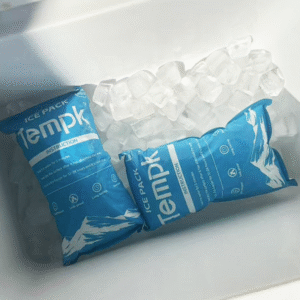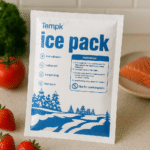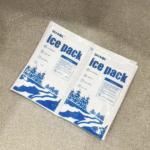Dry Ice Pack Sheets vs Dry Ice Bricks: Which Should You Choose for Shipping?
Shipping temperature-sensitive products requires careful consideration of cooling methods, especially when using dry ice. Understanding the key differences between dry ice pack sheets and dry ice bricks is crucial for businesses that rely on these products for maintaining the integrity of their goods during transit. This article delves into the characteristics, advantages, and challenges of each cooling solution, helping you choose the best one based on your specific shipping needs.
-
Understand the key differences between dry ice pack sheets and dry ice bricks, including their cooling efficiency and temperature maintenance.
-
Learn best practices for packaging and shipping with dry ice, following 2025 regulations and guidelines.
-
Make informed decisions about which dry ice solution suits your industry, whether you’re shipping food, pharmaceuticals, or lab samples.
What Are Dry Ice Pack Sheets and Dry Ice Bricks?
Dry ice comes in two primary forms: dry ice pack sheets and dry ice bricks. Both are designed to maintain low temperatures, but they offer different benefits depending on the nature of the shipment.
Dry Ice Pack Sheets
Dry ice pack sheets are flexible, thin sheets of dry ice that are often gel-based. These sheets are ideal for smaller, space-efficient shipments that require controlled cooling but not freezing temperatures. These are commonly used for food, pharmaceuticals, and medical devices that need to stay between 2°C and 8°C.
Dry Ice Bricks
On the other hand, dry ice bricks are solid blocks of carbon dioxide. They sublimate more slowly and maintain a consistent, ultra-low temperature of -78.5°C. These are perfect for long-duration shipments or items that require deep-freezing, such as frozen foods, vaccines, and biologics.
Benefits of Dry Ice:
1. Efficient Cooling
Dry ice absorbs heat and maintains a stable, cold environment. Whether in sheet or block form, it’s designed to preserve temperature-sensitive goods during transit.
2. No Liquid Residue
Unlike traditional ice, dry ice doesn’t melt into water. This means there’s no mess, making it a preferred option for shipping items like meat, seafood, and pharmaceuticals.
3. Cost-Effective
While dry ice might seem more expensive at first glance, its ability to maintain temperature over long periods helps businesses avoid costly product spoilage.
Why Choose Dry Ice Bricks or Pack Sheets?
For Long Shipments: Dry Ice Bricks
Dry ice bricks offer longer cooling durations due to their slower sublimation rate. They’re ideal for long-haul shipments, particularly when frozen products need to be kept at consistently low temperatures for up to 5 days.
-
Temperature Range: −78.5°C
-
Cooling Duration: 72–120 hours
-
Applications: Vaccines, biologics, frozen food
For Shorter, Space-Sensitive Shipments: Dry Ice Pack Sheets
Dry ice pack sheets are often more flexible and cost-effective. They’re perfect for smaller shipments or those requiring chilled temperatures without reaching freezing.
-
Temperature Range: 2°C to 8°C
-
Cooling Duration: 24–48 hours
-
Applications: Pharmaceuticals, fresh food, cosmetics
A Side-by-Side Comparison
| Cooling Solution | Temperature Range | Cooling Duration | Use Case |
|---|---|---|---|
| Dry Ice Pack Sheets (Gel) | 2°C to 8°C | 24–48 hours | Pharmaceuticals, chilled food, meal kits |
| Dry Ice Bricks (Solid CO₂) | −78.5°C | 72–120 hours | Frozen food, biologics, vaccines |
Which Is Better for Your Shipment?
Choosing between dry ice pack sheets and dry ice bricks depends on several factors:
-
Shipment Duration: For longer shipments, dry ice bricks are the better option. They provide extended cooling, making them perfect for multi-day shipments.
-
Size of Shipment: Dry ice pack sheets are ideal for compact shipments where space is a concern.
-
Budget: Dry ice pack sheets are more cost-effective compared to bricks, making them a good choice for smaller, less time-sensitive shipments.
Best Practices for Safe and Efficient Dry Ice Shipping
Proper packaging and handling are critical when shipping with dry ice. Here are some essential best practices to ensure your dry ice performs optimally:
1. Packaging Guidelines
-
Use Insulated Containers: Always pack dry ice in well-insulated boxes to reduce heat transfer and prolong cooling.
-
Ensure Ventilation: Dry ice sublimates into carbon dioxide gas, which can cause pressure buildup if trapped inside an airtight container. Always leave vents open or use vented packaging to allow the gas to escape safely.
2. Labeling and Documentation
-
Proper Hazard Labels: Dry ice is classified as a hazardous material by the UN. Use the correct labeling, including the “Carbon Dioxide, Solid” label and UN1845 number.
-
Shipping Paperwork: Ensure that the shipping documents accurately reflect the quantity of dry ice and include the appropriate handling instructions.
3. Weight and Quantity Guidelines
-
Shipping Limits: The maximum amount of dry ice per shipment is generally 5.5 pounds (2.5 kg), with additional paperwork required for larger shipments.
-
Calculate Dry Ice Needs: For short-duration shipments, plan on using 0.5× the product weight in dry ice. For longer shipments, increase the amount based on the cooling duration.
2025 Trends in Dry Ice Shipping
As we look toward 2025, the dry ice shipping industry is evolving to meet increasing demand for sustainability and technology integration:
Sustainable Packaging
Many companies are investing in reusable dry ice packs and eco-friendly packaging solutions to reduce their carbon footprint. This trend aligns with the growing focus on environmental responsibility.
Smart Sensors for Real-Time Monitoring
Advancements in smart packaging allow for real-time temperature monitoring, ensuring that temperature-sensitive goods remain within the desired range during transit.
Closed-Loop Recycling Systems
Some companies have adopted closed-loop dry ice recycling systems, allowing dry ice to be reused multiple times, reducing waste and cutting costs.
Frequently Asked Questions
Q1: How do I calculate the amount of dry ice for my shipment?
For 24-hour shipments, use 0.5× the product weight in dry ice. For 48-hour shipments, match the weight of dry ice to the product weight.
Q2: Can dry ice be used for international shipments?
Yes, but make sure to comply with international regulations and ensure proper documentation for each country.
Q3: How long can dry ice maintain a cold temperature?
Dry ice bricks can maintain ultra-low temperatures for up to 120 hours, while dry ice pack sheets can last 24-48 hours depending on conditions.
Conclusion: Choosing the Right Dry Ice Solution
Selecting the appropriate dry ice solution—dry ice pack sheets or dry ice bricks—depends on your product’s temperature requirements, shipping duration, and budget. By following the best practices outlined in this article and staying informed about the latest trends in dry ice shipping, you can ensure the safe and efficient transport of your temperature-sensitive products.
Next Steps for Your Business:
-
Review your shipping protocols to determine which dry ice solution fits your needs.
-
Ensure compliance with 2025 regulations regarding packaging, labeling, and documentation.
-
Partner with logistics experts to optimize your cold chain and reduce spoilage risks.
About Tempk
Tempk specializes in providing cutting-edge cold chain solutions tailored to your shipping needs. From dry ice products to advanced logistics systems, we ensure your temperature-sensitive goods reach their destination safely and efficiently. Contact us today for a consultation on optimizing your cold chain solutions.
























